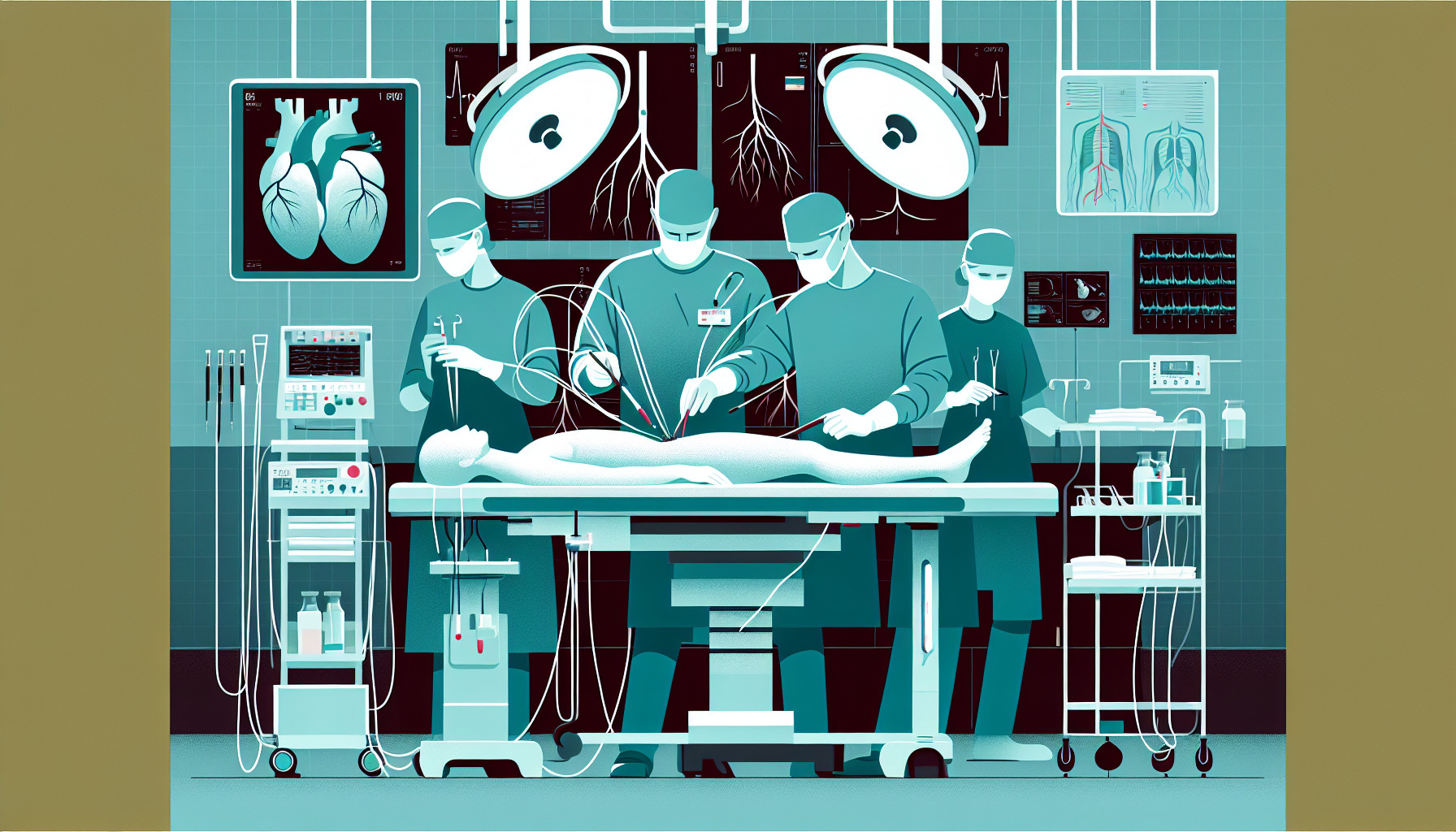Our Summary
This research paper discusses the different types of blood vessels that surgeons can use in a heart bypass surgery. The study emphasizes that the success of the surgery largely depends on choosing the right vessel to use. It’s important that the chosen vessel is similar to the heart’s own arteries in shape and structure. This will help ensure that the new blood flow path will work well and last a long time.
The paper reviews the most commonly used vessels in these surgeries and the heart arteries that most often get blocked. It also provides clinical information about what attributes affect the performance and long-term functionality of these vessels.
The study finds that the internal thoracic artery, found in the chest, is the best choice for a bypass surgery because of its structure and resistance to diseases. The radial artery in the arm and the right gastroepiploic artery located in the stomach area are the second and third best options, respectively. If these options are not possible, the ulnar artery in the arm is the preferred choice.
FAQs
- What factors are crucial for the success of vascular bypass surgery?
- Which graft is the most preferred for coronary bypass surgery and why?
- What are the second and third best options for grafts in coronary bypass surgery?
Doctor’s Tip
A doctor might tell a patient undergoing vascular bypass surgery the importance of selecting the appropriate graft for the procedure. They may advise the patient that the internal thoracic artery is the standard choice for bypass surgery due to its morphological characteristics that make it less likely to develop complications such as atherosclerosis and hyperplasia. They may also discuss alternative options such as the radial artery or right gastroepiploic artery, and explain that the ulnar artery may be used if other options are not feasible. The doctor may stress the importance of selecting the right graft to ensure the success and longevity of the bypass procedure.
Suitable For
Patients who are typically recommended vascular bypass surgery are those with coronary artery disease that cannot be managed with medication or other less invasive procedures. These patients may have severe blockages in their coronary arteries that are causing symptoms such as chest pain or shortness of breath, or they may have had a heart attack or other serious cardiac event.
In particular, patients with significant narrowing or blockage in the left main coronary artery, the left anterior descending artery, or multiple coronary arteries may be candidates for vascular bypass surgery. Patients with diabetes, kidney disease, or other comorbidities that make them high-risk for complications from coronary artery disease may also be recommended for bypass surgery.
Overall, the decision to recommend vascular bypass surgery is based on a careful evaluation of the patient’s individual circumstances, including their overall health, the severity of their coronary artery disease, and their risk factors for complications. Ultimately, the goal of vascular bypass surgery is to improve blood flow to the heart muscle and reduce the risk of future cardiac events.
Timeline
Before vascular bypass surgery, a patient may experience symptoms such as chest pain (angina), shortness of breath, fatigue, and other signs of poor blood flow to the heart. They may undergo diagnostic tests such as angiography to determine the extent of blockages in the arteries.
During the surgery, the surgeon will select a suitable vascular conduit (such as the internal thoracic artery, radial artery, or saphenous vein) to create a bypass around the blocked or narrowed coronary artery. The graft is carefully prepared and connected to the heart to restore blood flow to the heart muscle.
After the surgery, the patient will typically spend some time in the hospital for monitoring and recovery. They may need to take medications to manage pain, prevent infection, and reduce the risk of blood clots. Cardiac rehabilitation may also be recommended to help the patient recover and improve their overall heart health.
In the weeks and months following the surgery, the patient will need to follow up with their healthcare provider for monitoring and adjustments to their treatment plan. With proper care and lifestyle changes, the bypass graft can remain permeable and functional for many years, providing relief from symptoms and improving the patient’s quality of life.
What to Ask Your Doctor
- What are the different vascular conduit options available for coronary bypass surgery?
- What are the benefits and drawbacks of each type of vascular conduit?
- How do the morphological characteristics of the grafts impact their durability and permeability over time?
- What factors should be considered when selecting a vascular conduit for coronary bypass surgery?
- What is the standard choice for bypass surgery and why?
- What are the characteristics that make the internal thoracic artery a preferred choice for bypass surgery?
- What are the second and third best options for vascular conduits in coronary bypass surgery?
- When might the ulnar artery be considered as a preferred choice for a vascular conduit?
- What are the potential risks or complications associated with each type of vascular conduit?
- How often will follow-up appointments be needed to monitor the function and permeability of the vascular bypass?
Reference
Authors: Martínez-González B, Reyes-Hernández CG, Quiroga-Garza A, Rodríguez-Rodríguez VE, Esparza-Hernández CN, Elizondo-Omaña RE, Guzmán-López S. Journal: Ann Thorac Cardiovasc Surg. 2017 Apr 20;23(2):55-65. doi: 10.5761/atcs.ra.16-00178. Epub 2017 Feb 14. PMID: 28202895
